Air Pollution Dispersion Modelling in Urban Environment Using CFD: A Systematic Review
Abstract
:1. Introduction
1.1. Why Air Pollution Is a Hot Topic
1.2. Pollution Dispersion Modelling
1.3. Related Work
2. Materials and Methods
2.1. Problem Formulation
- What is the scope of the current CFD models of air pollution dispersion in terms of geometry? (RQ1 discussed in Section 3.3)
- What are the most commonly used mesh types and their characteristics? (RQ2 discussed in Section 3.5)
- What are the most commonly used turbulence models and their settings? (RQ3 discussed in Section 3.6)
- What are the most commonly used domain parameters, boundary conditions and settings for the solution setup? (RQ4 discussed in Section 3.4, Section 3.7 and Section 3.8)
- What validation and verification measures are recommended for CFD models of air pollution dispersion? (RQ5 discussed in Section 3.9).
2.2. Literature Search
- Articles that are peer-reviewed;
- Articles that were published after 2012;
- Articles that provide specific insights on the CFD setup of air pollution dispersion modelling in an urban environment.
- Articles that are primarily focused on the measures to decrease air pollution rather than on the CFD simulation setup;
- Articles that are primarily focused on wind comfort or thermal comfort rather than air pollution dispersion;
- Articles that are primarily focused on the ventilation, building configuration, balconies, roof type and sound barriers, rather than on the best approach for modelling pollution dispersion.
3. Discussion
3.1. Analysis Process
- Information from each paper for the investigated parameter is extracted, if available. This information can vary in terms of its representation. The domain dimensions, for example, can be expressed in terms of absolute metric units, building height, or another relevant measure. A domain dimension can also denote either the offset distance from the building to the domain boundaries, or the total distance between these boundaries.
- The extracted information about all of the distinct representations is unified so that the information can be grouped and compared against each other.
- In cases where a parameter adopts multiple values in a single publication (for instance, the distance between the top of the computational domain and the tallest building; see Section 3.4), only the least favourable (least conservative one) is included in the analysis.
- Information is sorted and filtered, if necessary. For example, the parameter domain width is dependent on another parameter, which is the dimensionality of the model (2D or 3D). The domain width, defined as the distance between the built area and the lateral boundaries of the domain (not in the flow direction), does not exist in a two-dimensional domain. Therefore, papers that utilize 2D modelling need to be filtered and excluded from the analysis of the parameter domain width.
- Finally, the information is grouped in a sensible and comprehensive manner, suitable for chart depiction and further analysis. The logic behind this selection is highly dependent on the investigated parameter. In the following paragraph, the domain height parameter group selection is provided as an example. The best practice guidelines (BPG) [29,30] recommend at least 5H offset from the top of the building under investigation to the top boundary of the domain, i.e., at least 6H domain height. Doubling this recommendation (offset of 10H above the building of interest) would lead to 11H total domain height. Therefore, the selected groups are defined as follows:
- Group 1: The domain height is less than the BPG recommendation (domain height ).
- Group 2: The domain height is in the range between the BPG recommendation and its doubled value (6 domain height ).
- Group 3: More conservative studies are included where the domain height is greater than the double the value of the BPG (domain height ).
- Group 4: Papers that do not explicitly state the domain height and only claim that they follow the BPG.
- Group 5: The domain height is not specified or mentioned at all.
3.2. General Choices
3.2.1. Type of Study
3.2.2. Software
3.3. Geometry
3.3.1. Urban Environment Type
3.3.2. Model Dimensionality
3.4. Computational Domain
3.4.1. Domain Height
3.4.2. Upstream and Downstream Distances
3.4.3. Lateral Extension and Width of the Domain
3.5. Mesh
3.5.1. Grid Resolution
3.5.2. Cell Type
3.6. Physics
3.6.1. Thermal Stratification
3.6.2. Pollutant Type
3.6.3. Source of Emission
3.6.4. Pollutant Reactivity
3.6.5. Governing Equations for Pollutant Dispersion
3.6.6. Steady-State vs. Transient Models
3.6.7. Turbulence Model
3.6.8. Wall Treatment
3.6.9. Turbulent Schmidt Number
3.7. Boundary Conditions
3.7.1. Domain Air Inflow Boundary
3.7.2. Domain Outflow Boundary
- Outflow boundary, corresponding to a fully developed flow where all flow derivatives are set to zero. Flow cannot re-enter the domain; this is the reason for the minimum downstream distances described in Section 3.4.
- Pressure outlet, with a constant static pressure and all other flow derivatives set to zero. Flow cannot re-enter the domain.
- Radiation open boundary used in microscale obstacle-accommodating meteorological models. Flow could re-enter the domain could.
- Convective outflow boundary that should be used in LES analysis.
3.7.3. Domain Top Boundary
3.7.4. Domain Lateral Boundaries
3.7.5. Domain Bottom Boundary
3.7.6. Domain Boundaries for Urban Elements (Buildings)
3.7.7. Boundary Conditions—Final Remarks
3.8. Solution Setup
3.9. A Note on Verification, Validation and Predictive Capability Estimation
3.9.1. Verification
3.9.2. Validation
- Validation data should be as relevant as possible to the cases in which the model predictions are required;
- Assessments of model accuracy must be quantitative, objective and independent of the decision on whether the model is good;
- This decision must be made in accordance with the model application.
3.9.3. Uncertainty Quantification and Predictive Capability
4. Conclusions and Future Work
- Type of study: Most of the reviewed papers (65%) were not related to immediate real-world applications but were in the research field of work.
- Software usage: However biased the reasons behind the software selection in the reviewed papers were, more than half of all studies used ANSYS Fluent software.
- Geometry: Urban environment type definition is too heterogeneous in nature to be assessed in a comprehensive manner, which points to the need for a unified and standardized classification in the field, to be used by all researchers. Such a classification would also facilitate the application of particular guidelines that are suitable for the different urban categories.
- Mesh: Cell type, shape, and distribution (refinement ratio, skewness, etc.) are considered fundamental to the overall quality of the computational mesh. The reviewed publications show that, for 3D analysis, the hexahedral cell type is most commonly reported (in 43% of the cases), and for 2D cases, the quadrilateral (54%) is mostly utilized. In both cases, however, approximately 40% of the authors did not report the cell type used in their studies.
- Type of pollutant: Additional research on particulate matter dispersion may be advisable, as over 70% of the reviewed articles only explored the dispersion of gaseous pollutants.
- Source of emission: A similar trend was observed in terms of emission source, where 83% of all studies investigated the dispersion of traffic emissions.
- Governing equations for pollutant dispersion: The passive scalar equation (in 46% of the papers) and the species transport model (in 24% of the papers) were the most commonly used techniques for modelling the pollution transport.
- Steady-state vs. transient models: The large majority of the studies (84%) employed the steady-state RANS equations, while 9% used LES and 7% used other models.
- Turbulent Schmidt number: The investigated papers used a wide range of values between 0.2 and 1.3. Many authors agree that the choice of the turbulent Schmidt number value is case-specific and different values must be tested to the find optimal one.
- Boundary conditions: The most widely used boundary condition types are as follows: velocity inlet for the inflow boundary, outflow and pressure outlet for the outflow boundary, symmetry planes for the top and lateral boundaries, and no-slip wall for the bottom boundary and the building geometries. In general, the papers followed the trends described in the BPGs [29,30,39] (where available) regarding the applicability of boundary conditions. However, there were certain cases where a boundary condition that was advised to be avoided by the BPGs [29,30,39] was the most commonly used in the reviewed articles. Such is the case with the symmetry condition used for the top domain boundary.
- Verification, validation, and predictive capability: The majority of publications claimed to perform V&V, but, in reality, their activities did not follow the established V&V guidance. Most papers reported the accuracy of their models using hedge words, such as ”good”, ”accurate”, ”close” and so on, and did not employ any formal predictive capability estimation. This renders any subsequent results indicative at best.
- Is the creation of a unified regulatory framework for CFD air pollution modelling a feasible task?
- What measures could be taken to raise awareness among researchers and practitioners regarding the proper application of V&V, and UQ activities?
Author Contributions
Funding
Institutional Review Board Statement
Informed Consent Statement
Data Availability Statement
Conflicts of Interest
References
- European Environment Agency. Air Quality in Europe 2021. Available online: https://www.eea.europa.eu/publications/air-quality-in-europe-2021 (accessed on 23 March 2022).
- World Health Organization. Ambient (Outdoor) Air Pollution. 2021. Available online: https://www.who.int/news-room/fact-sheets/detail/ambient-(outdoor)-air-quality-and-health (accessed on 23 March 2022).
- Zhang, X.; Chen, X.; Zhang, X. The impact of exposure to air pollution on cognitive performance. Proc. Natl. Acad. Sci. USA 2018, 115, 9193–9197. [Google Scholar] [CrossRef] [PubMed] [Green Version]
- Alzheimer Association. 2022 Alzheimer’s disease facts and figures. Alzheimer’s Dement. 2022, 18, 700–789. [Google Scholar] [CrossRef] [PubMed]
- World Health Organization. WHO Global Air Quality Guidelines: Particulate Matter (PM2.5 and PM10), Ozone, Nitrogen Dioxide, Sulfur Dioxide and Carbon Monoxide; World Health Organization: Geneva, Switzerland, 2021; p. 12. [Google Scholar]
- European Commission. Air Pollution and Climate Change. Science for Environmental Policy. 2010. Available online: https://environment.ec.europa.eu/research-and-innovation/science-environment-policy_en (accessed on 15 August 2022).
- D’Amato, G.; Chong-Neto, H.J.; Ortega, O.P.M.; Vitale, C.; Ansotegui, I.; Rosario, N.; Haahtela, T.; Galan, C.; Pawankar, R.; Murrieta-Aguttes, M.; et al. The effects of climate change on respiratory allergy and asthma induced by pollen and mold allergens. Allergy Eur. J. Allergy Clin. Immunol. 2020, 75, 2219–2228. [Google Scholar] [CrossRef] [PubMed]
- OECD. The Economic Consequences of Outdoor Air Pollution; OECD Publishing: Paris, France, 2016; p. 116. [Google Scholar]
- Daly, A.; Zannetti, P. Air Pollution Modeling—An Overview. Ambient. Air Pollut. 2007, I, 15–28. [Google Scholar]
- Global Goal 11: Sustainable Cities and Communities. 2015. Available online: https://www.globalgoals.org/goals/11-sustainable-cities-and-communities/ (accessed on 11 August 2022).
- EU Mission: Climate-Neutral and Smart Cities. Available online: https://research-and-innovation.ec.europa.eu/funding/funding-opportunities/funding-programmes-and-open-calls/horizon-europe/eu-missions-horizon-europe/climate-neutral-and-smart-cities_en (accessed on 11 August 2022).
- Petrova-Antonova, D.; Ilieva, S. Smart cities evaluation—A survey of performance and sustainability indicators. In Proceedings of the 44th Euromicro Conference on Software Engineering and Advanced Applications, SEAA 2018, Prague, Czech Republic, 29–31 August 2018; pp. 486–493. [Google Scholar]
- Li, Z.; Ming, T.; Liu, S.; Peng, C.; de Richter, R.; Li, W.; Zhang, H.; Wen, C.Y. Review on pollutant dispersion in urban areas-part A: Effects of mechanical factors and urban morphology. Build. Environ. 2021, 190, 107534. [Google Scholar] [CrossRef]
- United Nations Environment Programme. A Review of 20 Years’ Air Pollution Control in Beijing; United Nations Environment Programme: Nairobi, Kenya, 2019. [Google Scholar]
- Ng, W.Y.; Chau, C.K. A modeling investigation of the impact of street and building configurations on personal air pollutant exposure in isolated deep urban canyons. Sci. Total Environ. 2014, 468–469, 429–448. [Google Scholar] [CrossRef] [PubMed]
- Trindade da Silva, F.; Reis, N.C.; Santos, J.M.; Goulart, E.V.; Engel de Alvarez, C. The impact of urban block typology on pollutant dispersion. J. Wind Eng. Ind. Aerodyn. 2021, 210, 104524. [Google Scholar] [CrossRef]
- Di Sabatino, S.; Buccolieri, R.; Salizzoni, P. Recent advancements in numerical modelling of flow and dispersion in urban areas: A short review. Int. J. Environ. Pollut. 2013, 52, 172–191. [Google Scholar] [CrossRef]
- El-Harbawi, M. Air quality modelling, simulation, and computational methods: A review. Environ. Rev. 2013, 21, 149–179. [Google Scholar] [CrossRef]
- Leelőssy, Á.; Molnár, F.; Izsák, F.; Havasi, Á.; Lagzi, I.; Mészáros, R. Dispersion modeling of air pollutants in the atmosphere: A review. Open Geosci. 2014, 6, 257–278. [Google Scholar] [CrossRef]
- Lateb, M.; Meroney, R.N.; Yataghene, M.; Fellouah, H.; Saleh, F.; Boufadel, M.C. On the use of numerical modelling for near-field pollutant dispersion in urban environments—A review. Environ. Pollut. 2016, 208, 271–283. [Google Scholar] [CrossRef]
- Zhang, Y.; Gu, Z.; Yu, C.W. Impact Factors on Airflow and Pollutant Dispersion in Urban Street Canyons and Comprehensive Simulations: A Review. Curr. Pollut. Rep. 2020, 6, 425–439. [Google Scholar] [CrossRef]
- Orlanski, I. A rational subdivision of scales for atmospheric processes. Bull. Am. Meteorol. Soc. 1975, 56, 527–530. [Google Scholar]
- Blocken, B.; Tominaga, Y.; Stathopoulos, T. CFD simulation of micro-scale pollutant dispersion in the built environment. Build. Environ. 2013, 64, 225–230. [Google Scholar] [CrossRef]
- Tominaga, Y.; Stathopoulos, T. Ten questions concerning modeling of near-field pollutant dispersion in the built environment. Build. Environ. 2016, 105, 390–402. [Google Scholar] [CrossRef]
- Schlünzen, K.H.; Grawe, D.; Bohnenstengel, S.I.; Schlüter, I.; Koppmann, R. Joint modelling of obstacle induced and mesoscale changes—Current limits and challenges. J. Wind Eng. Ind. Aerodyn. 2011, 99, 217–225. [Google Scholar] [CrossRef]
- Herring, S.; Huq, P. A review of methodology for evaluating the performance of atmospheric transport and dispersion models and suggested protocol for providing more informative results. Fluids 2018, 3, 20. [Google Scholar] [CrossRef] [Green Version]
- Dauxois, T.; Peacock, T.; Bauer, P.; Caulfield, C.P.; Cenedese, C.; Gorlé, C.; Haller, G.; Ivey, G.N.; Linden, P.F.; Meiburg, E.; et al. Confronting Grand Challenges in environmental fluid mechanics. Phys. Rev. Fluids 2021, 6, 020501. [Google Scholar] [CrossRef]
- Tominaga, Y.; Stathopoulos, T. CFD simulation of near-field pollutant dispersion in the urban environment: A review of current modeling techniques. Atmos. Environ. 2013, 79, 716–730. [Google Scholar] [CrossRef] [Green Version]
- Franke, J.; Hellsten, A.; Schlünzen, H.; Carissimo, B. Best Practice Guideline for the CFD Simulation of Flows in the Urban Environment. Cost 732: Quality Assurance and Improvement of Microscale Meteorological Models; Meteorological Institute: Hamburg, Germany, 2007; p. 52. [Google Scholar]
- Tominaga, Y.; Mochida, A.; Yoshie, R.; Kataoka, H.; Nozu, T.; Yoshikawa, M.; Shirasawa, T. AIJ guidelines for practical applications of CFD to pedestrian wind environment around buildings. J. Wind Eng. Ind. Aerodyn. 2008, 96, 1749–1761. [Google Scholar] [CrossRef]
- Blocken, B.; Gualtieri, C. Ten iterative steps for model development and evaluation applied to Computational Fluid Dynamics for Environmental Fluid Mechanics. Environ. Model. Softw. 2012, 33, 1–22. [Google Scholar] [CrossRef]
- Blocken, B. Computational Fluid Dynamics for urban physics: Importance, scales, possibilities, limitations and ten tips and tricks towards accurate and reliable simulations. Build. Environ. 2015, 91, 219–245. [Google Scholar] [CrossRef]
- VDI Verein Deutscher Ingenieure e.V. VDI-Standards. Available online: https://www.vdi.de/news/detail/vdi-netzwerk-international (accessed on 15 April 2022).
- VDI 3783 Part 1: Environmental Meteorology—Dispersion of Emissions by Accidental Releases; VDI: Düsseldorf, Germany, 2019.
- VDI 3783 Part 2: Environmental Meteorology; Dispersion of Heavy Gas Emissions by Accidental Releases; Safety Study; VDI: Düsseldorf, Germany, 1990.
- VDI 3783 Part 4: Environmental Meteorology—Acute Accidental Releases into the Atmosphere—Requirements to an Optimal System to Determining and Assessing Pollution of the Atmosphere; VDI: Düsseldorf, Germany, 2004.
- VDI 3783 Part 8: Environmental Meteorology—Turbulence Parameters for Dispersion Models Supported by Measurement Data; VDI: Düsseldorf, Germany, 2017.
- VDI 3783 Part 13: Environmental Meteorology—Quality cOntrol Concerning Air Quality Forecast—Plant-Related Pollution Control—Dispersion Calculation According to TA Luft; VDI: Düsseldorf, Germany, 2010.
- VDI 3783 Part 9: Environmental Meteorology. Prognostic Microscale Wind Field Models. Evaluation for Flow around Buildings and Obstacles; VDI: Düsseldorf, Germany, 2017.
- VDI 3783 Part 10: Environmental Meteorology—Diagnostic Microscale Wind Field Models—Air-Flow around Buildings and Obstacles; VDI: Düsseldorf, Germany, 2017.
- VDI 3783 Part 12: Environmental Meteorology—Physical Modelling of Flow and Dispersion Processes in the Atmospheric Boundary Layer—Application of Wind Tunnels; VDI: Düsseldorf, Germany, 2000.
- Kitchenham, B.A.; Charters, S. Guidelines for Performing Systematic Literature Reviews in Software Engineering; Technical Report EBSE-2007-01; Keele University and Durham University Joint Report. 2007. Available online: https://www.bibsonomy.org/bibtex/aed0229656ada843d3e3f24e5e5c9eb9 (accessed on 15 August 2022).
- Greenhalgh, T.; Peacock, R. Effectiveness and efficiency of search methods in systematic reviews of complex evidence: Audit of primary sources. BMJ 2005, 331, 1064–1065. [Google Scholar] [CrossRef] [Green Version]
- Wohlin, C. Guidelines for Snowballing in Systematic Literature Studies and a Replication in Software Engineering. In Proceedings of the 18th International Conference on Evaluation and Assessment in Software Engineering, London, UK, 13–14 May 2014; pp. 1–10. [Google Scholar]
- Mei, S.J.; Luo, Z.; Zhao, F.Y.; Wang, H.Q. Street canyon ventilation and airborne pollutant dispersion: 2-D versus 3-D CFD simulations. Sustain. Cities Soc. 2019, 50, 101700. [Google Scholar] [CrossRef]
- Zheng, X.; Montazeri, H.; Blocken, B. Large-eddy simulation of pollutant dispersion in generic urban street canyons: Guidelines for domain size. J. Wind Eng. Ind. Aerodyn. 2021, 211, 104527. [Google Scholar] [CrossRef]
- Tominaga, Y.; Mochida, A.; Shirasawa, T.; Yoshie, R.; Kataoka, H.; Harimoto, K.; Nozu, T. Cross Comparisons of CFD Results of Wind Environment at Pedestrian Level around a High-rise Building and within a Building Complex. J. Asian Archit. Build. Eng. 2004, 3, 63–70. [Google Scholar] [CrossRef]
- Li, M.; Gernand, J.M. Identifying shelter locations and building air intake risk from release of particulate matter in a three-dimensional street canyon via wind tunnel and CFD simulation. Air Qual. Atmos. Health 2019, 12, 1387–1398. [Google Scholar] [CrossRef]
- Gong, L.; Wang, X. CFD Simulation of Highway Contaminant Dispersion. In Proceedings of the ASME International Mechanical Engineering Congress and Exposition, Phoenix, AZ, USA, 11–17 November 2016. [Google Scholar]
- Adair, D.; Jaeger, M. Evaluation of Model for Air Pollution in the Vicinity of Roadside Solid Barriers. Energy Environ. Eng. 2014, 2, 145–152. [Google Scholar] [CrossRef]
- Li, X.B.; Lu, Q.C.; Lu, S.J.; He, H.D.; Peng, Z.R.; Gao, Y.; Wang, Z.Y. The impacts of roadside vegetation barriers on the dispersion of gaseous traffic pollution in urban street canyons. Urban For. Urban Green. 2016, 17, 80–91. [Google Scholar] [CrossRef]
- Wang, X.; Zou, C.; Wang, X.; Liu, X. Impact of vehicular exhaust emissions on pedestrian health under different traffic structures and wind speeds. Hum. Ecol. Risk Assess. 2020, 26, 1646–1662. [Google Scholar] [CrossRef]
- Wang, L.; Su, J.; Gu, Z.; Tang, L. Numerical study on flow field and pollutant dispersion in an ideal street canyon within a real tree model at different wind velocities. Comput. Math. Appl. 2021, 81, 679–692. [Google Scholar] [CrossRef]
- Ahmadi, M.; Mirjalily, S.A.A.; Oloomi, S.A.A. Simulation of pollutant dispersion in urban street canyons using hybrid rans-les method with two-phase model. Comput. Fluids 2020, 210, 104676. [Google Scholar] [CrossRef]
- Issakhov, A.; Omarova, P.; Issakhov, A. Numerical study of thermal influence to pollutant dispersion in the idealized urban street road. Air Qual. Atmos. Health 2020, 13, 1045–1056. [Google Scholar] [CrossRef]
- Chatzimichailidis, A.E.; Argyropoulos, C.D.; Assael, M.J.; Kakosimos, K.E. Qualitative and quantitative investigation of multiple large eddy simulation aspects for pollutant dispersion in street canyons using OpenFOAM. Atmosphere 2019, 10, 17. [Google Scholar] [CrossRef] [Green Version]
- Jiang, G.; Yoshie, R. Side ratio effects on flow and pollutant dispersion around an isolated high-rise building in a turbulent boundary layer. Build. Environ. 2020, 180, 107078. [Google Scholar] [CrossRef]
- Chavez, M.; Hajra, B.; Stathopoulos, T.; Bahloul, A. Assessment of near-field pollutant dispersion: Effect of upstream buildings. J. Wind Eng. Ind. Aerodyn. 2012, 104, 509–515. [Google Scholar] [CrossRef]
- Bijad, E.; Delavar, M.A.; Sedighi, K. CFD simulation of effects of dimension changes of buildings on pollution dispersion in the built environment. Alex. Eng. J. 2016, 55, 3135–3144. [Google Scholar] [CrossRef] [Green Version]
- Zhou, X.; Ying, A.; Cong, B.; Kikumoto, H.; Ooka, R.; Kang, L.; Hu, H. Large eddy simulation of the effect of unstable thermal stratification on airflow and pollutant dispersion around a rectangular building. J. Wind Eng. Ind. Aerodyn. 2021, 211, 104526. [Google Scholar] [CrossRef]
- Abed, B.; Bouarbi, L.; Hamidou, M.K.; Bouzit, M. A numerical analysis of pollutant dispersion in street canyon: Influence of the turbulent Schmidt number. Sci. Rev. Eng. Environ. Sci. 2017, 26, 423–436. [Google Scholar] [CrossRef] [Green Version]
- Elfverson, D.; Lejon, C. Use and Scalability of OpenFOAM for Wind Fields and Pollution Dispersion with Building-and Ground-Resolving Topography. Atmosphere 2021, 12, 1124. [Google Scholar] [CrossRef]
- Lavanya, G. Air Quality Modeling of Santhepet Street Canyon of Mysore City Using FLUENT. Int. J. Sci. Eng. Appl. 2013, 2, 191–196. [Google Scholar]
- Zhunussova, M.; Jaeger, M.; Adair, D. Environmental impact of developing large buildings close to residential environments. In Proceedings of the 2015 International Conference on Sustainable Mobility Applications, Renewables and Technology, Kuwait City, Kuwait, 23–25 November 2015. [Google Scholar]
- Jeanjean, A.P.R.; Gallagher, J.; Monks, P.S.; Leigh, R.J. Ranking current and prospective NO2 pollution mitigation strategies: An environmental and economic modelling investigation in Oxford Street, London. Environ. Pollut. 2017, 225, 587–597. [Google Scholar] [CrossRef] [PubMed] [Green Version]
- Jeanjean, A.P.R.; Hinchliffe, G.; McMullan, W.A.; Monks, P.S.; Leigh, R.J. A CFD study on the effectiveness of trees to disperse road traffic emissions at a city scale. Atmos. Environ. 2015, 120, 1–14. [Google Scholar] [CrossRef]
- Huertas, J.I.; Aguirre, J.E.; Lopez Mejia, O.D.; Lopez, C.H. Design of road-side barriers to mitigate air pollution near roads. Appl. Sci. 2021, 11, 2391. [Google Scholar] [CrossRef]
- Guo, D.P.; Zhao, P.; Yao, R.T.; Li, Y.P.; Hu, J.M.; Fan, D.A. Numerical and wind tunnel simulation studies of the flow field and pollutant diffusion around a building under neutral and stable atmospheric stratifications. J. Appl. Meteorol. Climatol. 2019, 58, 2405–2420. [Google Scholar] [CrossRef]
- Yang, F.; Kang, Y.; Gao, Y.; Zhong, K. Numerical simulations of the effect of outdoor pollutants on indoor air quality of buildings next to a street canyon. Build. Environ. 2015, 87, 10–22. [Google Scholar] [CrossRef]
- Fan, M.; Chau, C.K.; Chan, E.H.W.; Jia, J. A decision support tool for evaluating the air quality and wind comfort induced by different opening configurations for buildings in canyons. Sci. Total Environ. 2017, 574, 569–582. [Google Scholar] [CrossRef]
- Guo, D.; Yang, F.; Shi, X.; Li, Y.; Yao, R. Numerical simulation and wind tunnel experiments on the effect of a cubic building on the flow and pollutant diffusion under stable stratification. Build. Environ. 2021, 205, 108222. [Google Scholar] [CrossRef]
- Zheng, X.; Yang, J. CFD simulations of wind flow and pollutant dispersion in a street canyon with traffic flow: Comparison between RANS and LES. Sustain. Cities Soc. 2021, 75, 103307. [Google Scholar] [CrossRef]
- Aristodemou, E.; Mottet, L.; Constantinou, A.; Pain, C. Turbulent flows and pollution dispersion around tall buildings using adaptive large eddy simulation (LES). Buildings 2020, 10, 127. [Google Scholar] [CrossRef]
- Boppana, V.B.; Wise, D.J.; Ooi, C.C.; Zhmayev, E.; Poh, H.J. CFD assessment on particulate matter filters performance in urban areas. Sustain. Cities Soc. 2019, 46, 101376. [Google Scholar] [CrossRef]
- Keshavarzian, E.; Jin, R.; Dong, K.; Kwok, K.C.S.; Zhao, M.; Zhang, Y. Effects of density and source location of pollutant particles on pollution dispersion around high-rise buildings. Appl. Math. Model. 2020, 81, 582–602. [Google Scholar] [CrossRef] [PubMed]
- Sanchez, B.; Santiago, J.L.; Martilli, A.; Martin, F.; Borge, R.; Quaassdorff, C.; de la Paz, D. Modelling NOX concentrations through CFD-RANS in an urban hot-spot using high resolution traffic emissions and meteorology from a mesoscale model. Atmos. Environ. 2017, 163, 155–165. [Google Scholar] [CrossRef]
- Jin, X.; Yang, L.; Du, X.; Yang, Y. Transport characteristics of PM2.5 inside urban street canyons: The effects of trees and vehicles. Build. Simul. 2017, 10, 337–350. [Google Scholar] [CrossRef]
- Li, C.; Liu, L.; Tan, W. Evaluation of RSM for simulating dispersion of CO2 cloud in flat and urban terrains. Aerosol Air Qual. Res. 2019, 19, 390–398. [Google Scholar] [CrossRef] [Green Version]
- García-Sánchez, C.; Van Tendeloo, G.; Gorlé, C. Quantifying inflow uncertainties in RANS simulations of urban pollutant dispersion. Atmos. Environ. 2017, 161, 263–273. [Google Scholar] [CrossRef]
- Hirsch, C. Numerical Computation of Internal & External Flows, 2nd ed.; Butterworth-Heinemann: Oxford, UK, 2007; Volume 1, p. 696. [Google Scholar]
- ANSYS Inc. ANSYS Fluent Mosaic Technology Automatically Combines Disparate Meshes with Polyhedral Elements for Fast, Accurate Flow Resolution; ANSYS: Canonsburg, PA, USA, 2018. [Google Scholar]
- Chang, C.H.; Lin, J.S.; Cheng, C.M.; Hong, Y.S. Numerical simulations and wind tunnel studies of pollutant dispersion in the urban street canyons with different height arrangements. J. Mar. Sci. Technol. 2013, 21, 119–126. [Google Scholar]
- Cui, D.; Li, X.; Liu, J.; Yuan, L.; Mak, C.M.; Fan, Y.; Kwok, K. Effects of building layouts and envelope features on wind flow and pollutant exposure in height-asymmetric street canyons. Build. Environ. 2021, 205, 108177. [Google Scholar] [CrossRef]
- Blocken, B.; Vervoort, R.; van Hooff, T. Reduction of outdoor particulate matter concentrations by local removal in semi-enclosed parking garages: A preliminary case study for Eindhoven city center. J. Wind Eng. Ind. Aerodyn. 2016, 159, 80–98. [Google Scholar] [CrossRef]
- Garcia, J.; Cerdeira, R.; Tavares, N.; Coelho, L.M.R.; Kumar, P.; Carvalho, M.G. Influence of virtual changes in building configurations of a real street canyon on the dispersion of PM10. Urban Clim. 2013, 5, 68–81. [Google Scholar] [CrossRef] [Green Version]
- Hong, B.; Qin, H.; Lin, B. Prediction of wind environment and indoor/outdoor relationships for PM2.5 in different building-tree grouping patterns. Atmosphere 2018, 9, 39. [Google Scholar] [CrossRef] [Green Version]
- Qin, H.; Hong, B.; Huang, B.; Cui, X.; Zhang, T. How dynamic growth of avenue trees affects particulate matter dispersion: CFD simulations in street canyons. Sustain. Cities Soc. 2020, 61, 102331. [Google Scholar] [CrossRef]
- Wang, X.; Lei, H.; Han, Z.; Zhou, D.; Shen, Z.; Zhang, H.; Zhu, H.; Bao, Y. Three-dimensional delayed detached-eddy simulation of wind flow and particle dispersion in the urban environment. Atmos. Environ. 2019, 201, 173–189. [Google Scholar] [CrossRef]
- Xue, F.; Li, X. The impact of roadside trees on traffic released PM10 in urban street canyon: Aerodynamic and deposition effects. Sustain. Cities Soc. 2017, 30, 195–204. [Google Scholar] [CrossRef]
- Haghighifard, H.R.; Tavakol, M.M.; Ahmadi, G. Numerical study of fluid flow and particle dispersion and deposition around two inline buildings. J. Wind Eng. Ind. Aerodyn. 2018, 179, 385–406. [Google Scholar] [CrossRef]
- Niu, H.; Wang, B.; Liu, B.; Liu, Y.; Liu, J.; Wang, Z. Numerical simulations of the effect of building configurations and wind direction on fine particulate matters dispersion in a street canyon. Environ. Fluid Mech. 2017, 18, 829–847. [Google Scholar] [CrossRef]
- Vranckx, S.; Vos, P. OpenFOAM CFD Simulation of Pollutant Dispersion in Street Canyons: Validation and Annual Impact of Trees. Report. 2013. Available online: https://www.harmo.org/Conferences/Proceedings/_Varna/publishedSections/PPT/H16-088-Vranckx-p.pdf (accessed on 15 August 2022).
- Santiago, J.L.; Martín, F.; Martilli, A. A computational fluid dynamic modelling approach to assess the representativeness of urban monitoring stations. Sci. Total Environ. 2013, 454–455, 61–72. [Google Scholar] [CrossRef] [PubMed]
- Li, C.; Xu, Y.; Liu, M.; Hu, Y.; Huang, N.; Wu, W. Modeling the impact of urban three-dimensional expansion on atmospheric environmental conditions in an old industrial district: A case study in shenyang, china. Pol. J. Environ. Stud. 2020, 29, 3171–3181. [Google Scholar] [CrossRef]
- Toja-Silva, F.; Pregel-Hoderlein, C.; Chen, J. On the urban geometry generalization for CFD simulation of gas dispersion from chimneys: Comparison with Gaussian plume model. J. Wind Eng. Ind. Aerodyn. 2018, 177, 1–18. [Google Scholar] [CrossRef]
- Aristodemou, E.; Arcucci, R.; Mottet, L.; Robins, A.; Pain, C.; Guo, Y.K. Enhancing CFD-LES air pollution prediction accuracy using data assimilation. Build. Environ. 2019, 165, 106383. [Google Scholar] [CrossRef]
- Yu, Y.; Kwok, K.C.S.; Liu, X.P.; Zhang, Y. Air pollutant dispersion around high-rise buildings under different angles of wind incidence. J. Wind Eng. Ind. Aerodyn. 2017, 167, 51–61. [Google Scholar] [CrossRef]
- Santiago, J.L.; Borge, R.; Martin, F.; de la Paz, D.; Martilli, A.; Lumbreras, J.; Sanchez, B. Evaluation of a CFD-based approach to estimate pollutant distribution within a real urban canopy by means of passive samplers. Sci. Total Environ. 2017, 576, 46–58. [Google Scholar] [CrossRef]
- Tee, C.; Ng, E.Y.K.; Xu, G. Analysis of transport methodologies for pollutant dispersion modelling in urban environments. J. Environ. Chem. Eng. 2020, 8, 103937. [Google Scholar] [CrossRef]
- Dai, Y.; Mak, C.M.; Ai, Z.; Hang, J. Evaluation of computational and physical parameters influencing CFD simulations of pollutant dispersion in building arrays. Build. Environ. 2018, 137, 90–107. [Google Scholar] [CrossRef]
- An, K.; Fung, J.C.H. An improved SST k-ω model for pollutant dispersion simulations within an isothermal boundary layer. J. Wind Eng. Ind. Aerodyn. 2018, 179, 369–384. [Google Scholar] [CrossRef]
- An, K.; Wong, S.M.; Fung, J.C.H. Exploration of sustainable building morphologies for effective passive pollutant dispersion within compact urban environments. Build. Environ. 2019, 148, 508–523. [Google Scholar] [CrossRef]
- Versteeg, H.; Malalasekera, W. An Introduction to Computational Fluid Dynamics, 2nd ed.; Pearson Education Limited: Essex, UK, 2007. [Google Scholar]
- Ferziger, J.H.; Peric, M. Computational Methods for Fluid Dynamics, 3rd ed.; Springer: Berlin/Heidelberg, Germany, 2002. [Google Scholar]
- Li, Z.; Zhang, H.; Wen, C.Y.; Yang, A.S.; Juan, Y.H. The effects of lateral entrainment on pollutant dispersion inside a street canyon and the corresponding optimal urban design strategies. Build. Environ. 2021, 195, 107740. [Google Scholar] [CrossRef]
- Yu, H.; Thé, J. Simulation of gaseous pollutant dispersion around an isolated building using the k-Ω SST (shear stress transport) turbulence model. J. Air Waste Manag. Assoc. 2017, 67, 517–536. [Google Scholar] [CrossRef] [Green Version]
- Wang, L.; Pan, Q.; Zheng, X.P.; Yang, S.S. Effects of low boundary walls under dynamic inflow on flow field and pollutant dispersion in an idealized street canyon. Atmos. Pollut. Res. 2017, 8, 564–575. [Google Scholar] [CrossRef]
- Liu, C.H.; Ng, C.T.; Wong, C.C.C. A theory of ventilation estimate over hypothetical urban areas. J. Hazard. Mater. 2015, 296, 9–16. [Google Scholar] [CrossRef] [PubMed]
- Rivas, E.; Santiago, J.L.; Lechón, Y.; Martín, F.; Ariño, A.; Pons, J.J.; Santamaría, J.M. CFD modelling of air quality in Pamplona City (Spain): Assessment, stations spatial representativeness and health impacts valuation. Sci. Total Environ. 2019, 649, 1362–1380. [Google Scholar] [CrossRef] [PubMed]
- Tan, Z.; Tan, M.; Sui, X.; Jiang, C.; Song, H. Impact of source shape on pollutant dispersion in a street canyon in different thermal stabilities. Atmos. Pollut. Res. 2019, 10, 1985–1993. [Google Scholar] [CrossRef]
- Takano, Y.; Moonen, P. On the influence of roof shape on flow and dispersion in an urban street canyon. J. Wind Eng. Ind. Aerodyn. 2013, 123, 107–120. [Google Scholar] [CrossRef]
- Issakhov, A.; Omarova, P. Modeling and analysis of the effects of barrier height on automobiles emission dispersion. J. Clean. Prod. 2021, 296, 126450. [Google Scholar] [CrossRef]
- Ding, F.; Iredell, L.; Theobald, M.; Wei, J.; Meyer, D. PBL Height From AIRS, GPS RO, and MERRA-2 Products in NASA GES DISC and Their 10-Year Seasonal Mean Intercomparison. Earth Space Sci. 2021, 8, e2021EA001859. [Google Scholar] [CrossRef]
- Vranckx, S.; Vos, P.; Maiheu, B.; Janssen, S. Impact of trees on pollutant dispersion in street canyons: A numerical study of the annual average effects in Antwerp, Belgium. Sci. Total Environ. 2015, 532, 474–483. [Google Scholar] [CrossRef]
- Abhijith, K.V.; Gokhale, S. Passive control potentials of trees and on-street parked cars in reduction of air pollution exposure in urban street canyons. Environ. Pollut. 2015, 204, 99–108. [Google Scholar] [CrossRef] [PubMed]
- Zhao, Y.; Jiang, C.; Song, X. Numerical evaluation of turbulence induced by wind and traffic, and its impact on pollutant dispersion in street canyons. Sustain. Cities Soc. 2021, 74, 103142. [Google Scholar] [CrossRef]
- Reiminger, N.; Vazquez, J.; Blond, N.; Dufresne, M.; Wertel, J. CFD evaluation of mean pollutant concentration variations in step-down street canyons. J. Wind Eng. Ind. Aerodyn. 2020, 196, 104032. [Google Scholar] [CrossRef]
- Huang, Y.d.; Xu, X.; Liu, Z.Y.; Kim, C.N. Effects of Strength and Position of Pollutant Source on Pollutant Dispersion Within an Urban Street Canyon. Environ. Forensics 2015, 16, 163–172. [Google Scholar] [CrossRef]
- Jurado, X.; Reiminger, N.; Vazquez, J.; Wemmert, C. On the minimal wind directions required to assess mean annual air pollution concentration based on CFD results. Sustain. Cities Soc. 2021, 71, 102920. [Google Scholar] [CrossRef]
- Hao, C.; Xie, X.; Huang, Y.; Huang, Z. Study on influence of viaduct and noise barriers on the particulate matter dispersion in street canyons by CFD modeling. Atmos. Pollut. Res. 2019, 10, 1723–1735. [Google Scholar] [CrossRef]
- Huang, Y.; He, W.; Kim, C.N. Impacts of shape and height of upstream roof on airflow and pollutant dispersion inside an urban street canyon. Environ. Sci. Pollut. Res. 2015, 22, 2117–2137. [Google Scholar] [CrossRef] [PubMed]
- Liu, C.H.; Wong, C.C. On the pollutant removal, dispersion, and entrainment over two-dimensional idealized street canyons. Atmos. Res. 2014, 135–136, 128–142. [Google Scholar] [CrossRef]
- Aeschliman, D.P.; Oberkampf, W.L. Experimental methodology for computational fluid dynamics code validation. AIAA J. 1998, 36, 733–741. [Google Scholar] [CrossRef] [Green Version]
- Jakeman, A.; Letcher, R.; Norton, J. Ten iterative steps in development and evaluation of environmental models. Environ. Model. Softw. 2006, 21, 602–614. [Google Scholar] [CrossRef] [Green Version]
- Bayarri, M.J.; Berger, J.O.; Paulo, R.; Sacks, J.; Cafeo, J.A.; Cavendish, J.; Lin, C.H.; Tu, J. A Framework for Validation of Computer Models. Technometrics 2007, 49, 138–154. [Google Scholar] [CrossRef]
- Oberkampf, W.L.; Roy, C.J. Verification and Validation in Scientific Computing; Cambridge University Press: Cambridge, UK, 2010. [Google Scholar]
- Blocken, B.; Stathopoulos, T.; van Beeck, J.P. Pedestrian-level wind conditions around buildings: Review of wind-tunnel and CFD techniques and their accuracy for wind comfort assessment. Build. Environ. 2016, 100, 50–81. [Google Scholar] [CrossRef]
- Oreskes, N.; Shrader-Frechette, K.; Belitz, K. Verification, Validation, and Confirmation of Numerical Models in the Earth Sciences. Science 1994, 263, 641–646. [Google Scholar] [CrossRef] [PubMed] [Green Version]
- AIAA. Guide for the Verification and Validation of Computational Fluid Dynamics Simulations; American Institute of Aeronautics and Astronautics: Reston, VA, USA, 1998. [Google Scholar]
- ANS. Verification and Validation of Non-Safety-Related Scientific and Engineering Computer Programs for the Nuclear Industry; American Nuclear Society: La Grange Park, IL, USA, 2008. [Google Scholar]
- DoD. Modeling and Simulation (M&S) Verification, Validation, and Accreditation (VV&A); US Department of Defence Instruction 5000.61. 2018. Available online: https://standards.globalspec.com/std/13095820/DODD%205000.61 (accessed on 15 August 2022).
- ASME. Standard for Verification and Validation in Computational Fluid Dynamics and Heat Transfer; American Society of Mechanical Engineers: New York, NY, USA, 2021. [Google Scholar]
- Ghanem, R.; Owhadi, H.; Higdon, D. Handbook of Uncertainty Quantification; Springer: Cham, Switzerland, 2017. [Google Scholar]
- Trucano, T.G.; Pilch, M.; Oberkampf, W.L. General Concepts for Experimental Validation of ASCI Code Applications; SAND2002-0341; Sandia National Laboratories (SNL): Albuquerque, NM, USA, 2002. [Google Scholar]
- Beisbart, C.; Saam, N. Computer Simulation Validation: Fundamental Concepts, Methodological Frameworks, and Philosophical Perspectives; Simulation Foundations, Methods and Applications; Springer International Publishing: Cham, Switzerland, 2019. [Google Scholar]
- Roache, P. Fundamentals of Verification and Validation; Hermosa Publ.: Hermosa, CA, USA, 2009. [Google Scholar]
- Saltelli, A.; Ratto, M.; Andres, T.; Campolongo, F.; Cariboni, J.; Gatelli, D.; Saisana, M.; Tarantola, S. Global Sensitivity Analysis: The Primer; Wiley: Hoboken, NJ, USA, 2008. [Google Scholar]
- Roache, P.J. Perspective: A Method for Uniform Reporting of Grid Refinement Studies. J. Fluids Eng. 1994, 116, 405–413. [Google Scholar] [CrossRef]
- Roy, C.J. Review of code and solution verification procedures for computational simulation. J. Comput. Phys. 2005, 205, 131–156. [Google Scholar] [CrossRef]
- Oberkampf, W.L.; Ferson, S. Model Validation Under Both Aleatory and Epistemic Uncertainty; Sandia National Laboratories (SNL): Albuquerque, NM, USA, 2007. [Google Scholar]
- Willmott, C.J. Some Comments on the Evaluation of Model Performance. Bull. Am. Meteorol. Soc. 1982, 63, 1309–1313. [Google Scholar] [CrossRef]
- Chang, J.; Hanna, S. Air quality model performance evaluation. Meteorol. Atmos. Phys. 2004, 87, 167–196. [Google Scholar] [CrossRef]
- Aggarwal, R.; Ranganathan, P. Common pitfalls in statistical analysis: The use of correlation techniques. Perspect. Clin. Res. 2016, 7, 187. [Google Scholar]
- Ferson, S.; Oberkampf, W.L.; Ginzburg, L. Model validation and predictive capability for the thermal challenge problem. Comput. Methods Appl. Mech. Eng. 2008, 197, 2408–2430. [Google Scholar] [CrossRef]
- Britter, R.; Schatzmann, M. Background and Justification Document to Support the Model Evaluation Guidance and Protocol, COST Action 732; European Cooperation in Science and Technology (COST) Office: Brussels, Belgium, 2007. [Google Scholar]
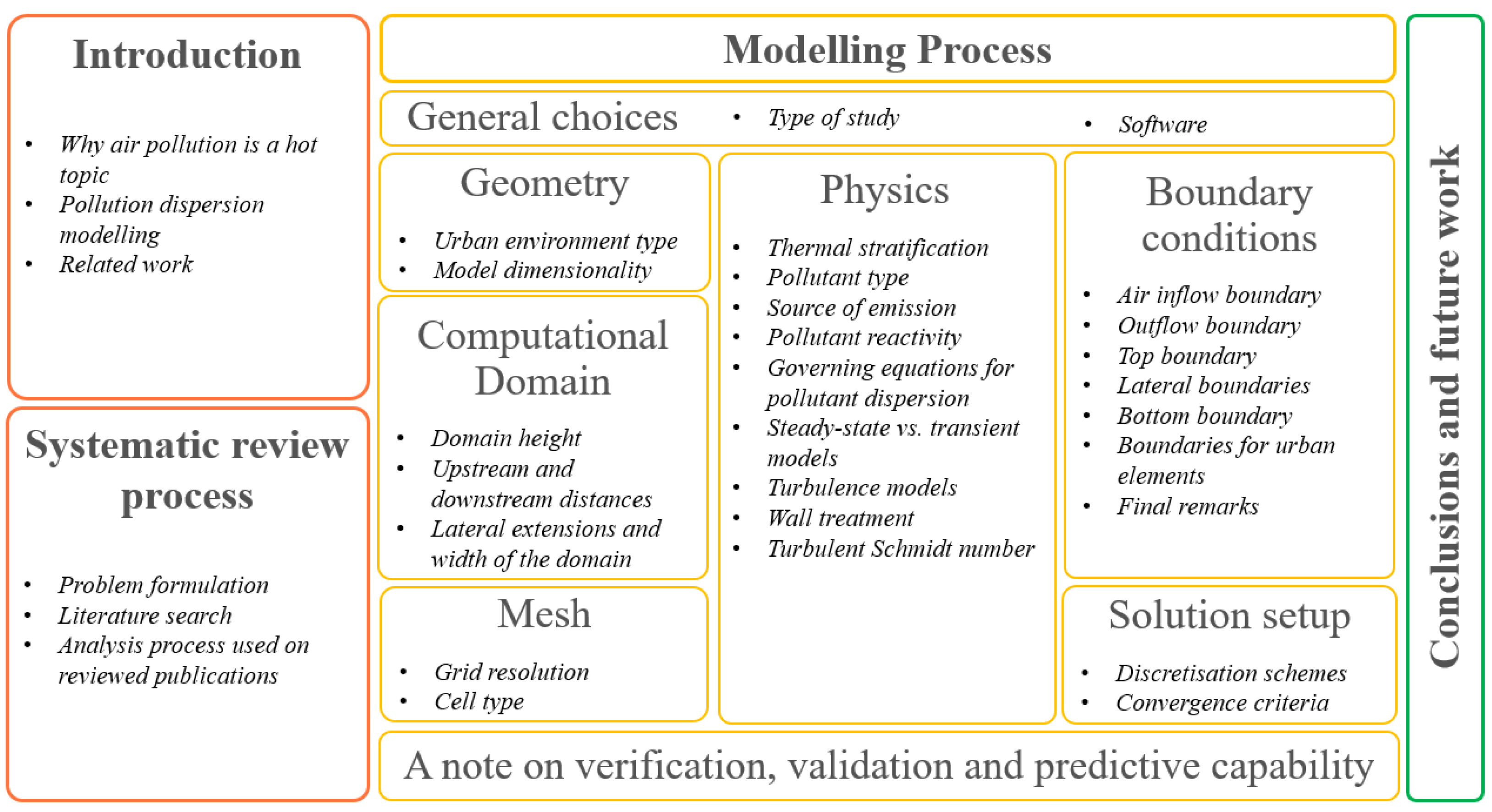


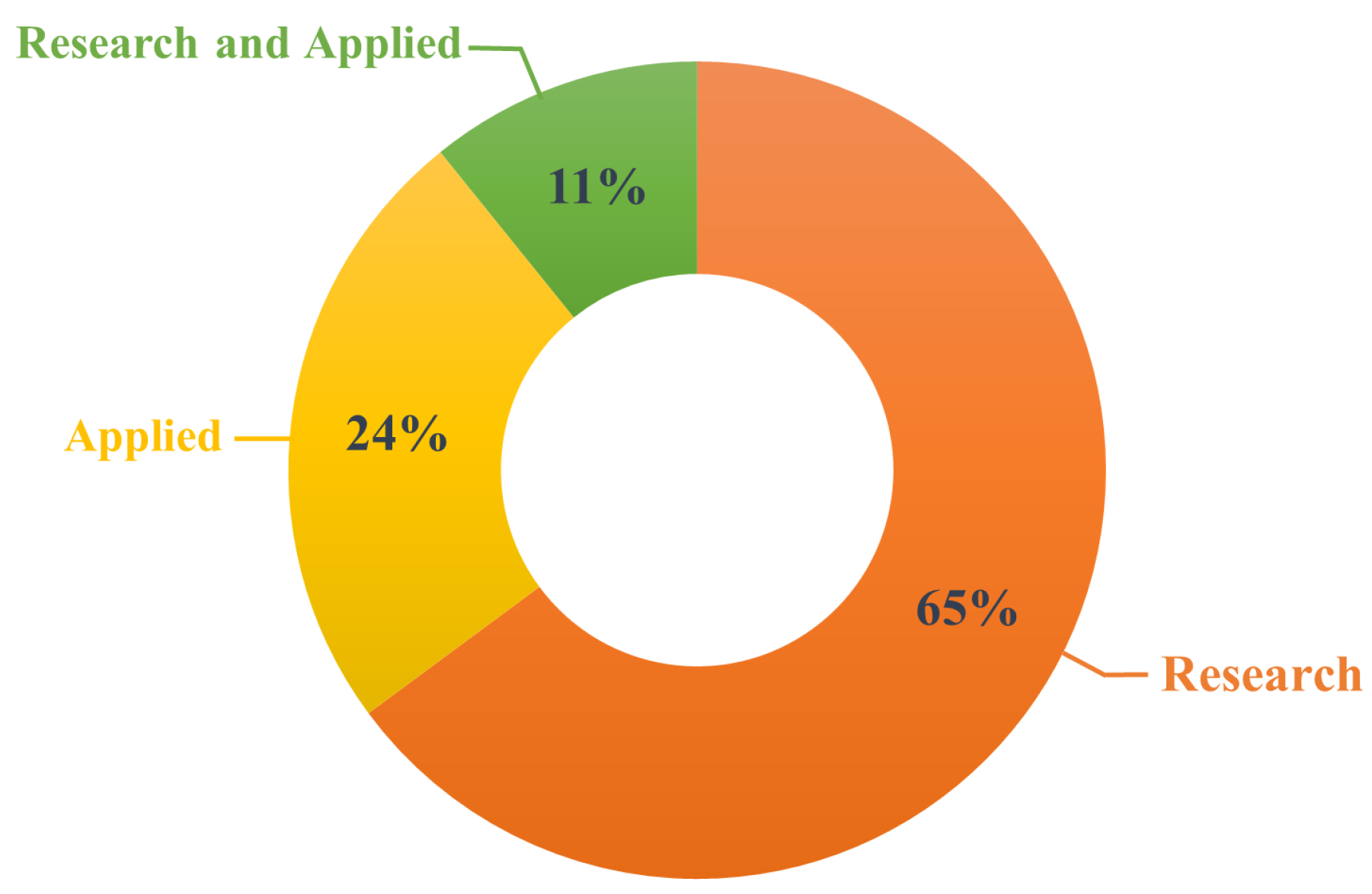
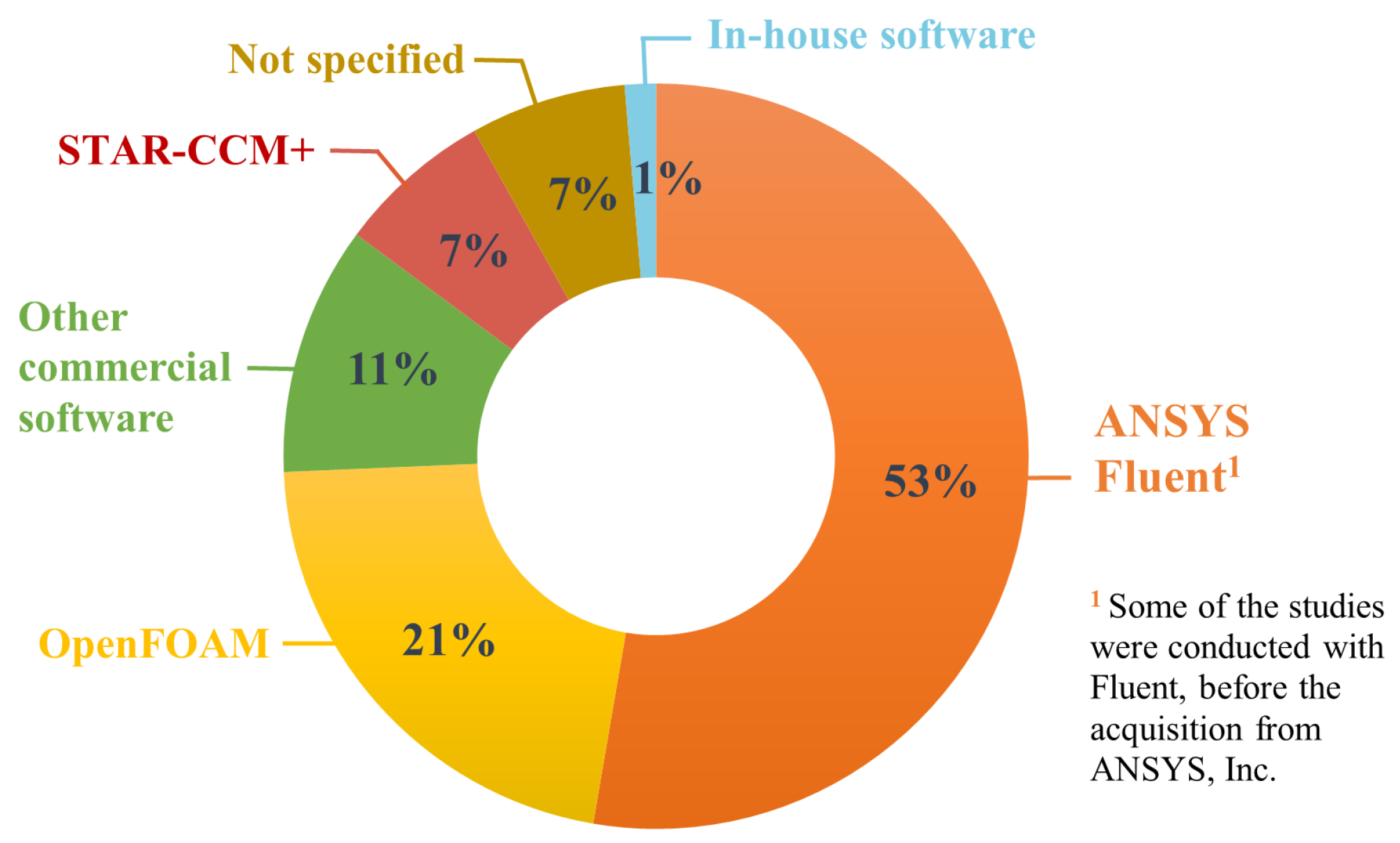
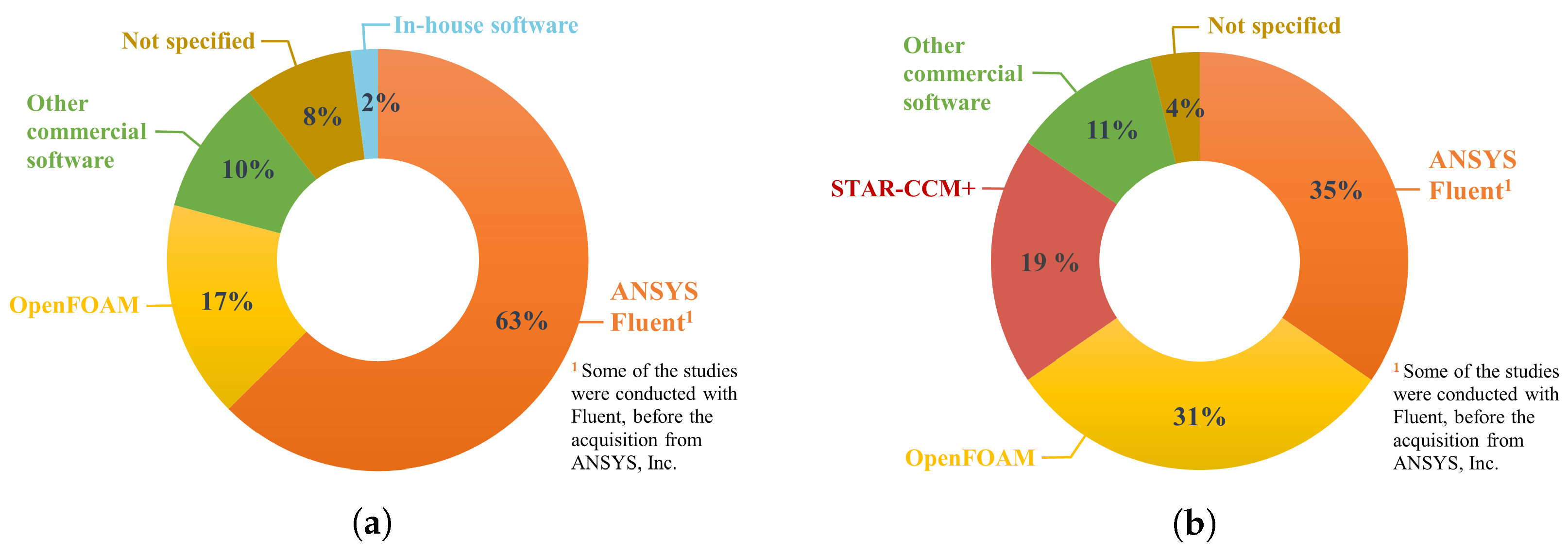
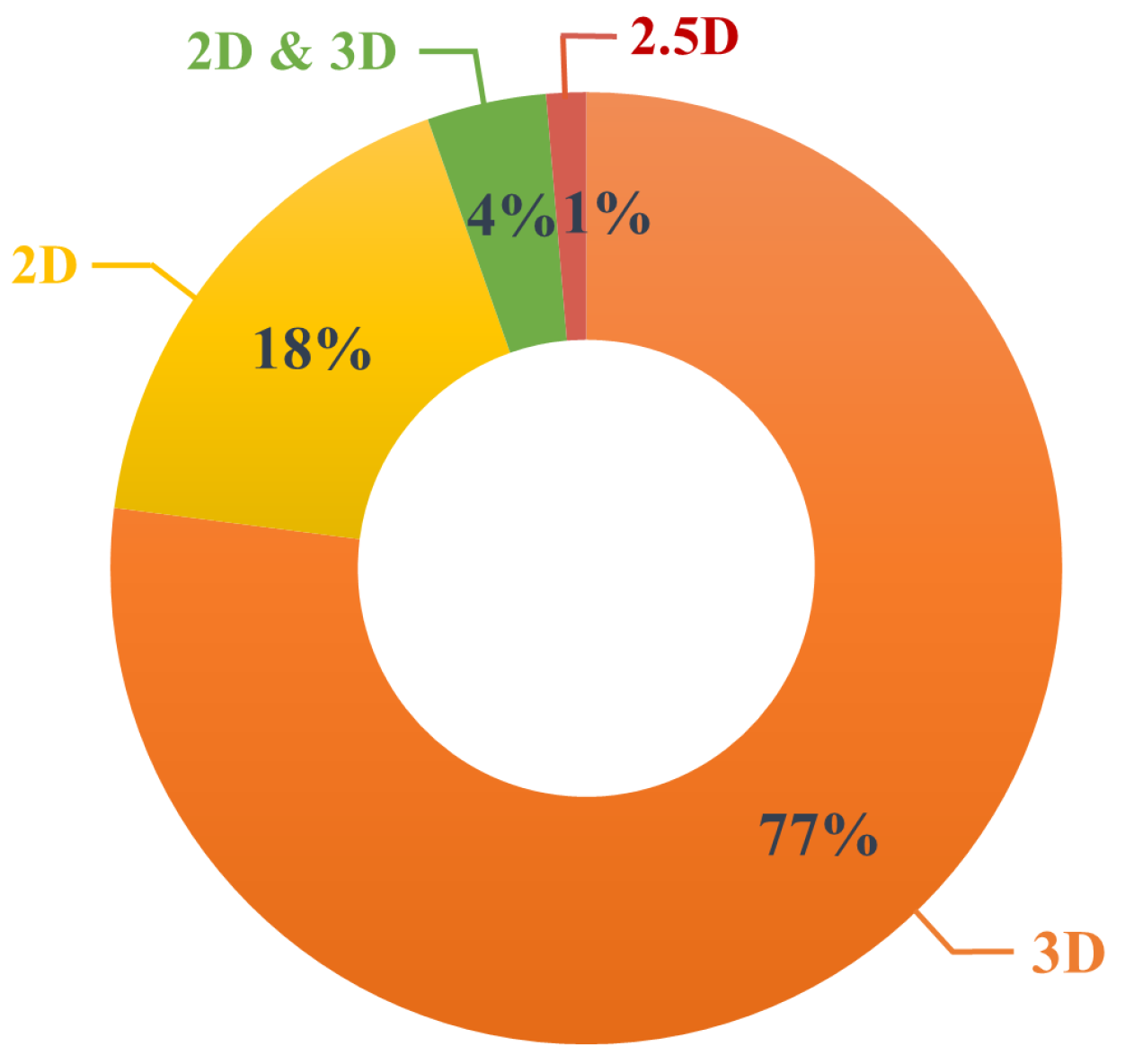
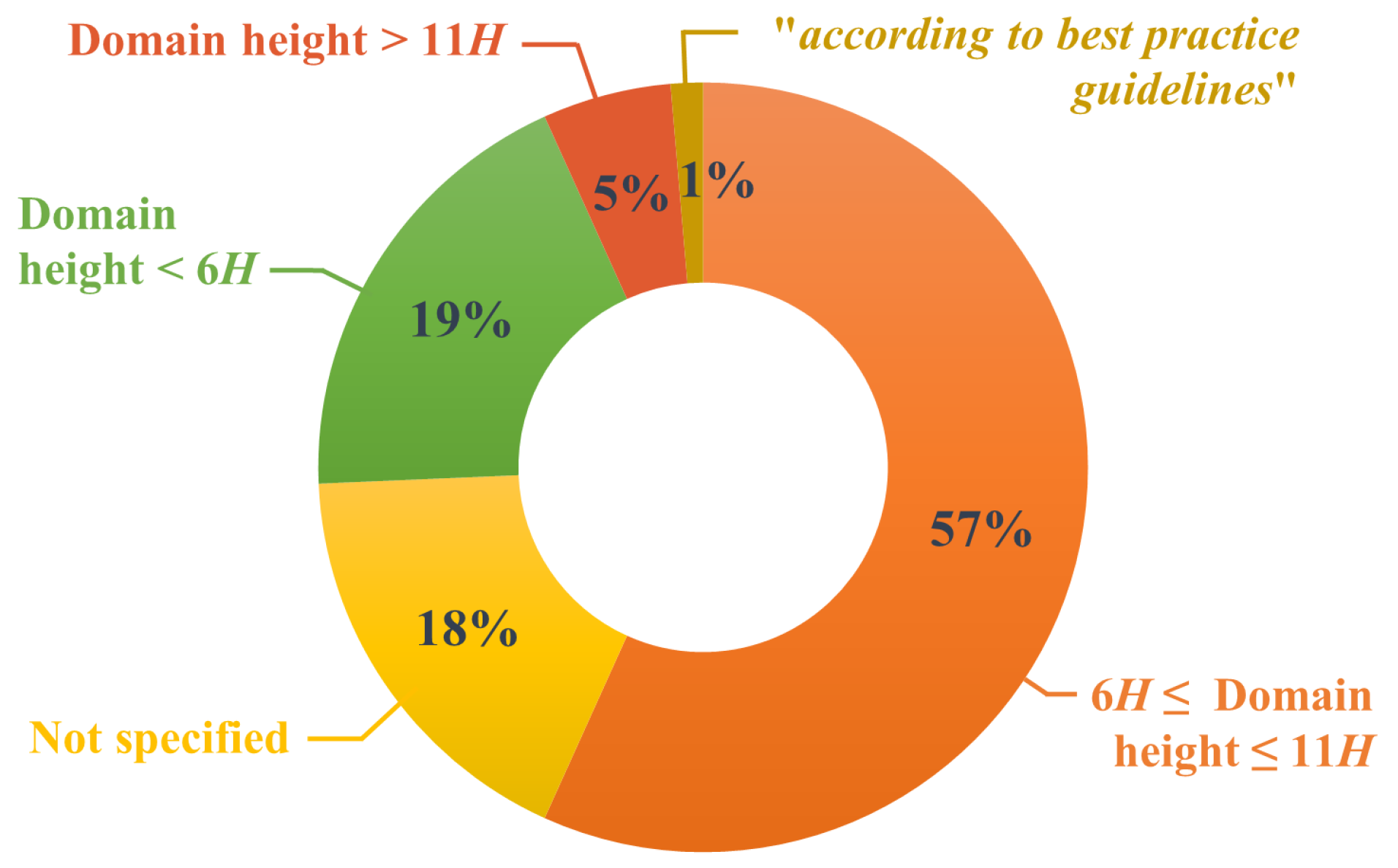
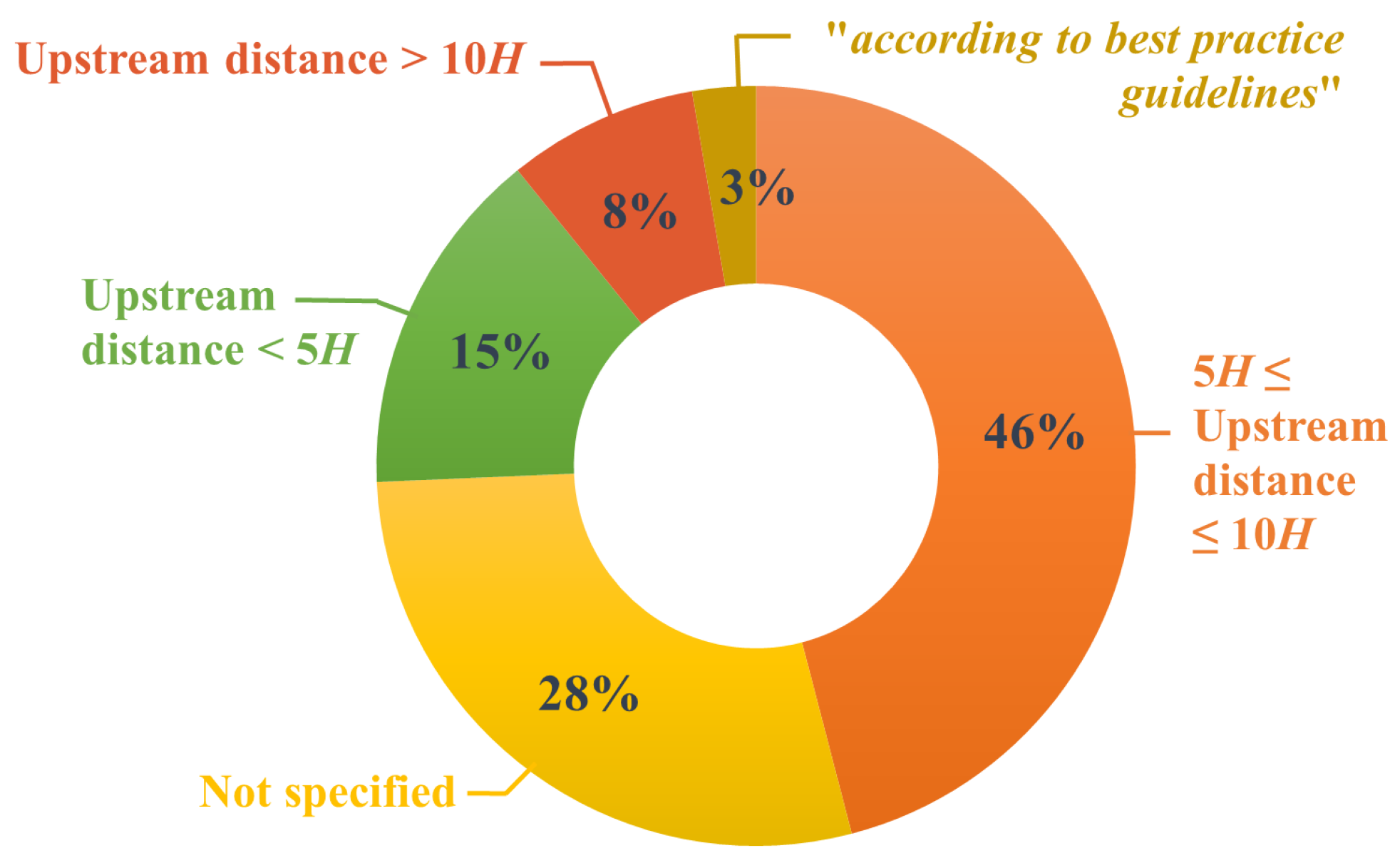

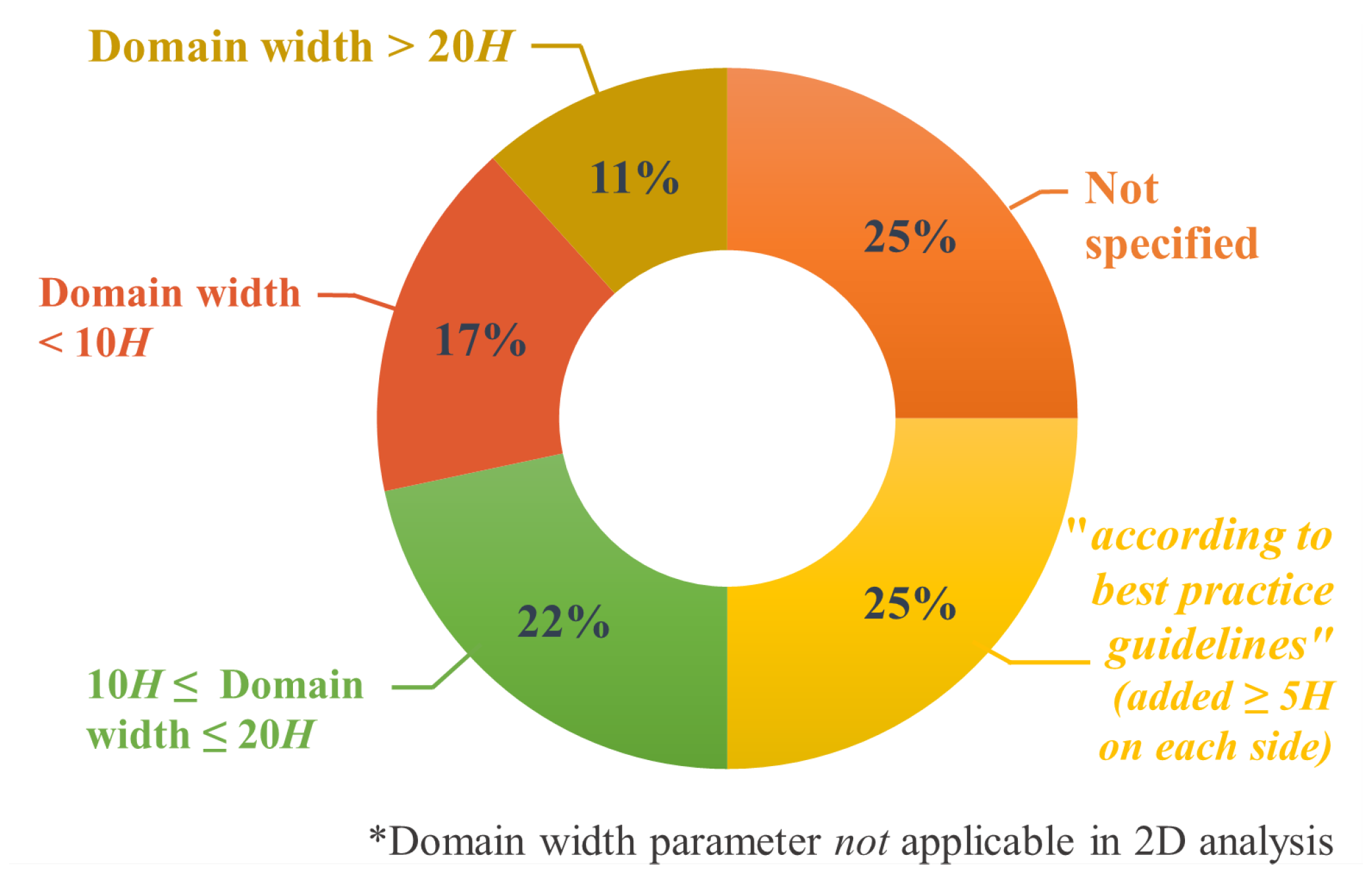
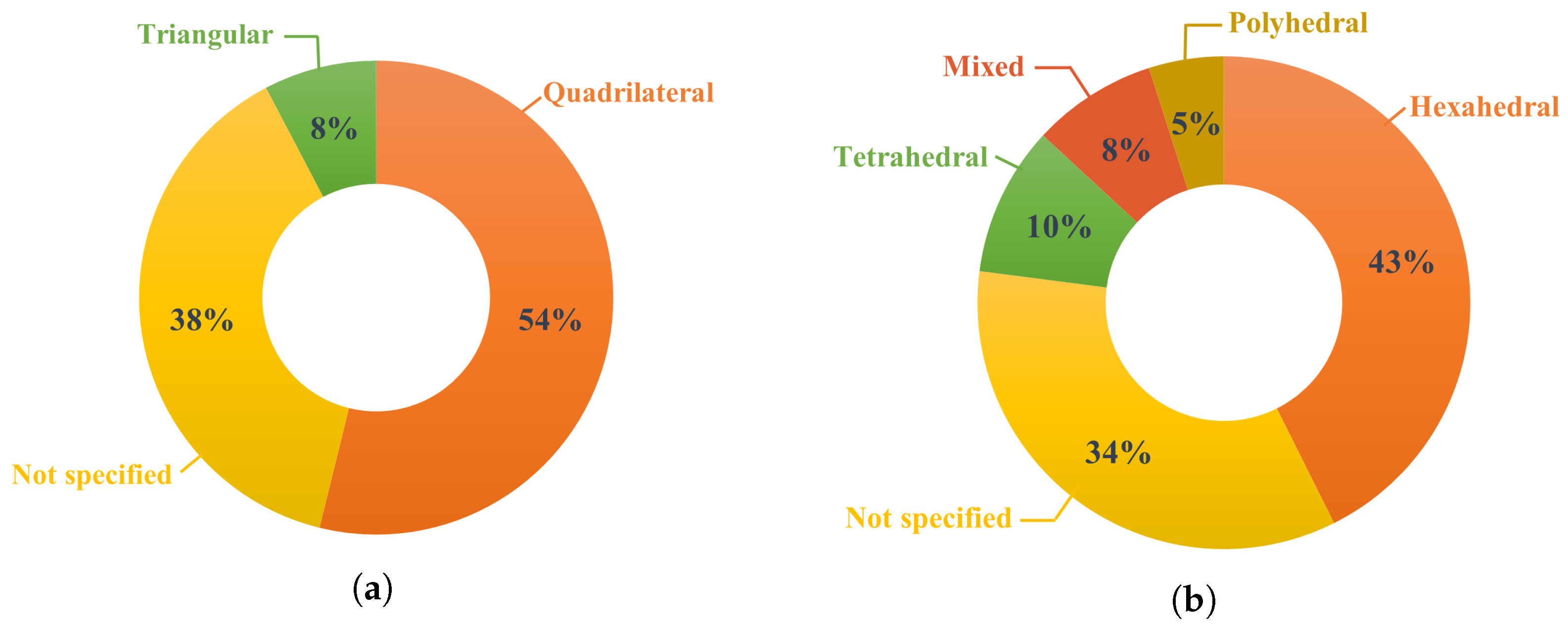
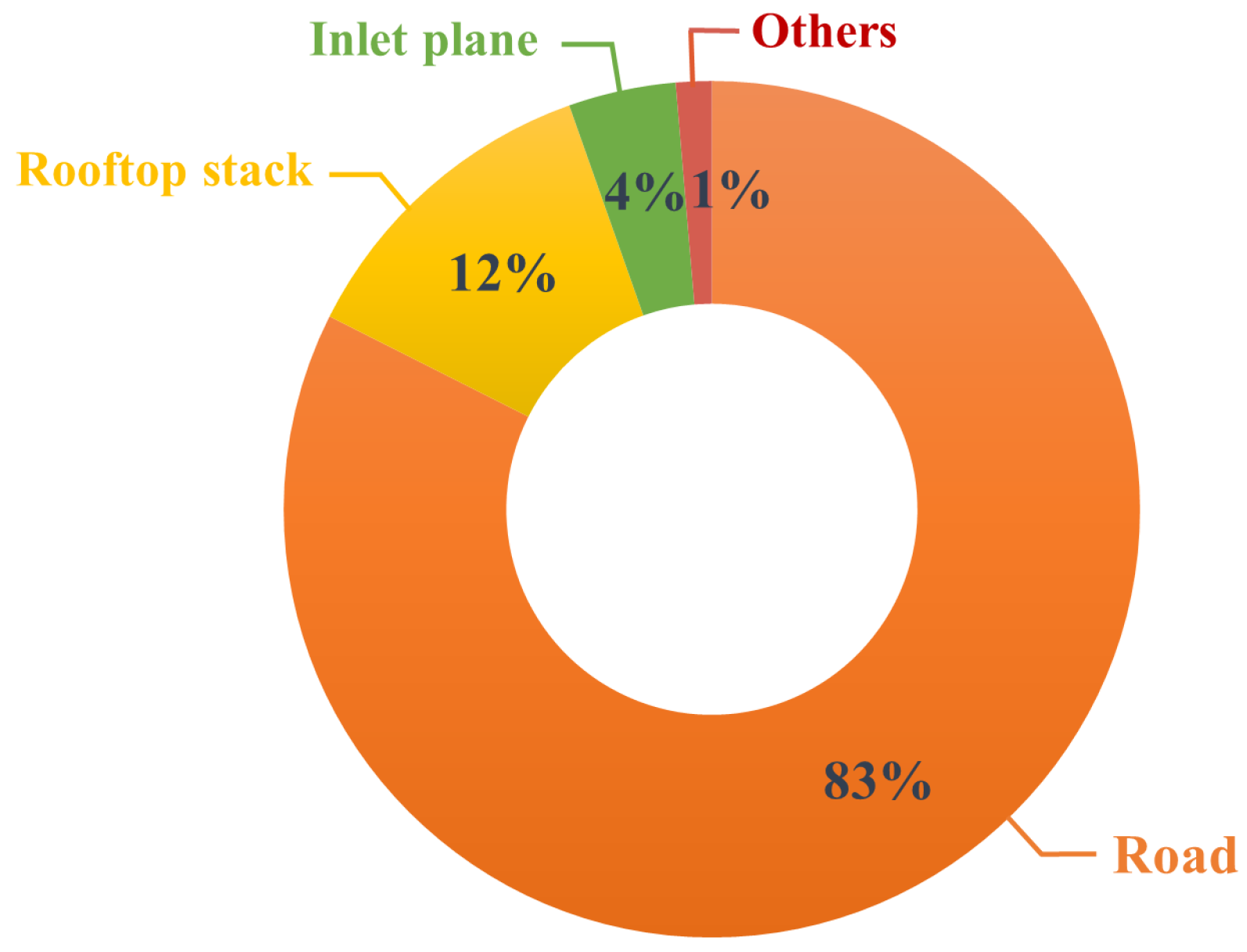

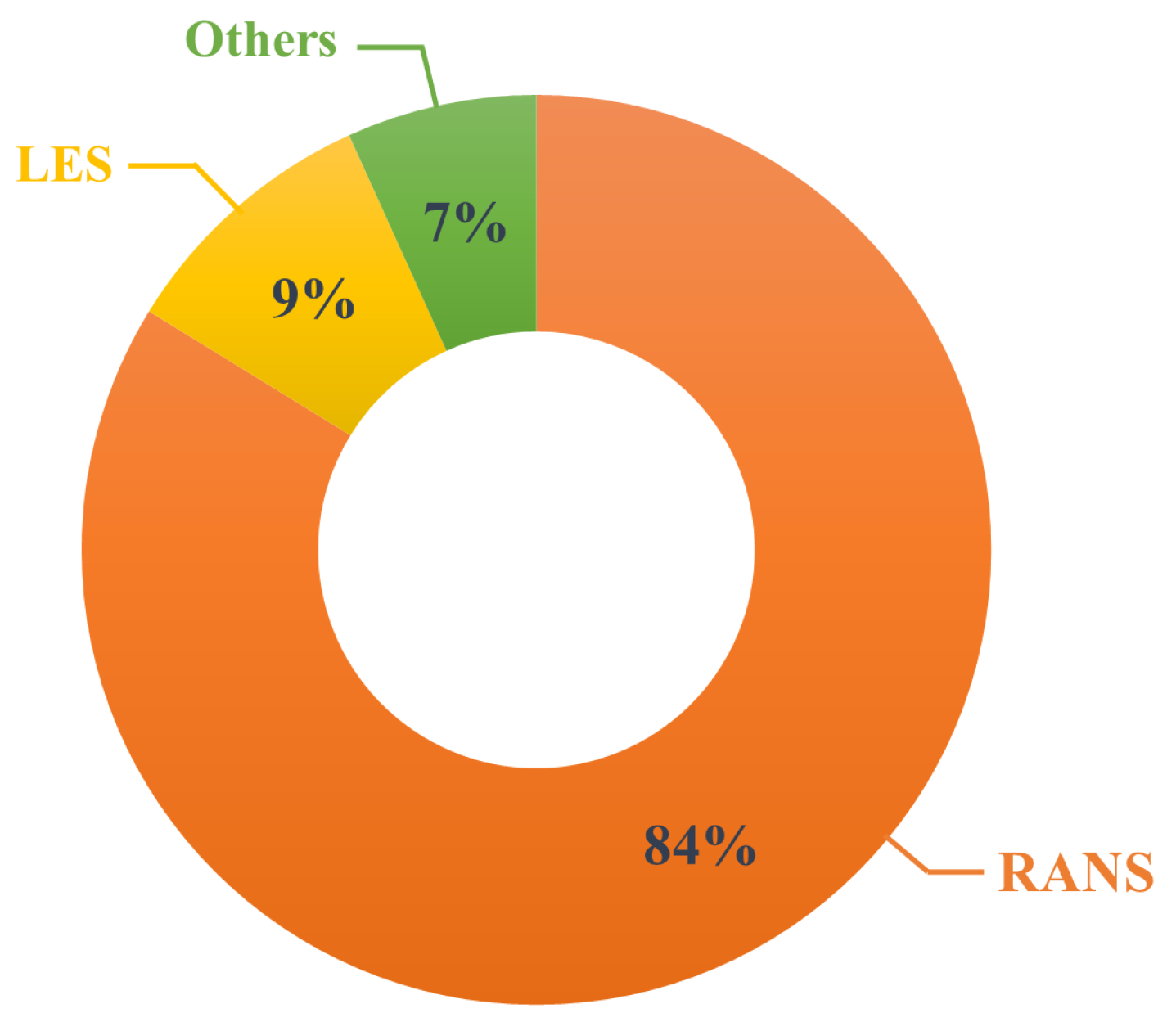
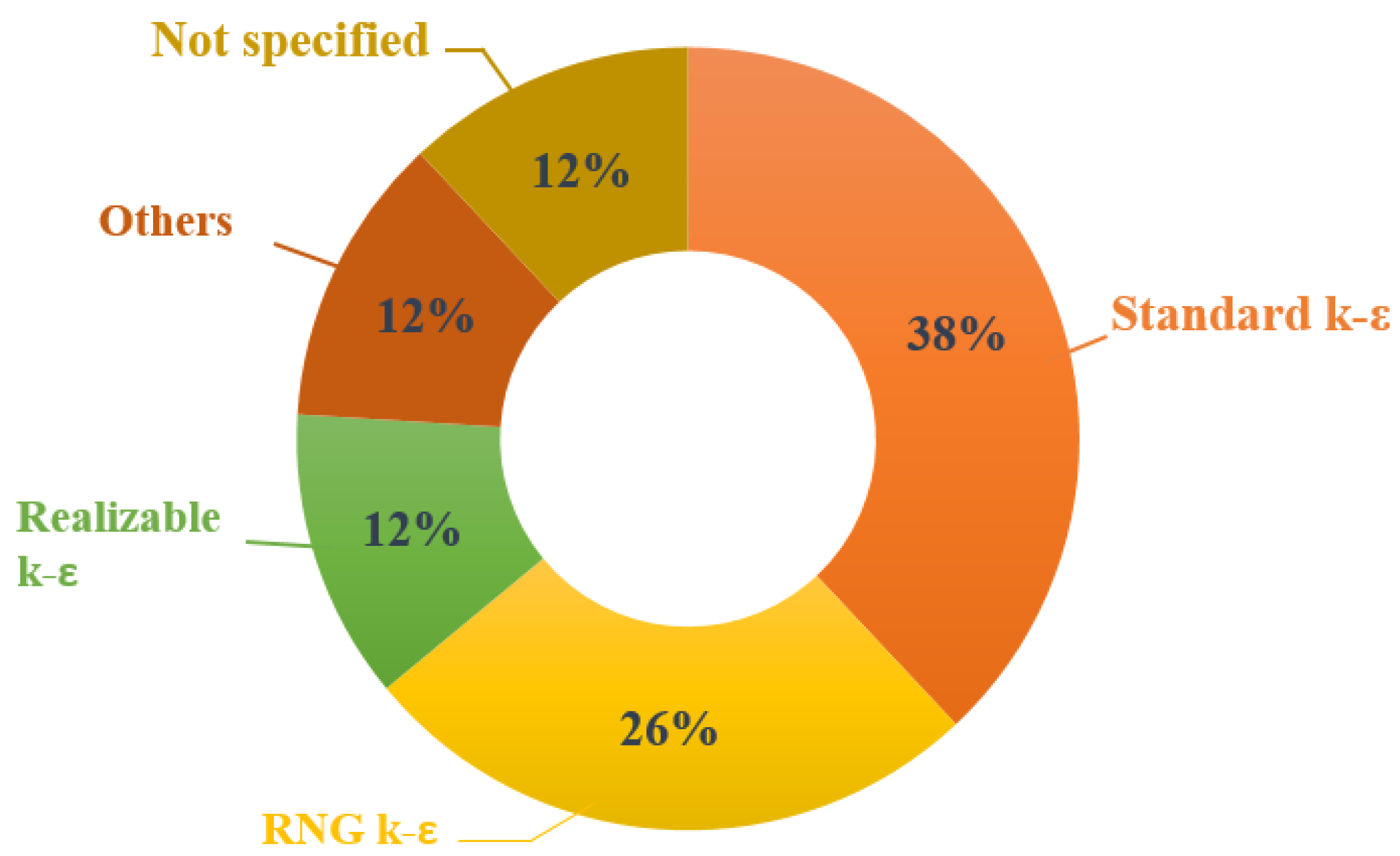
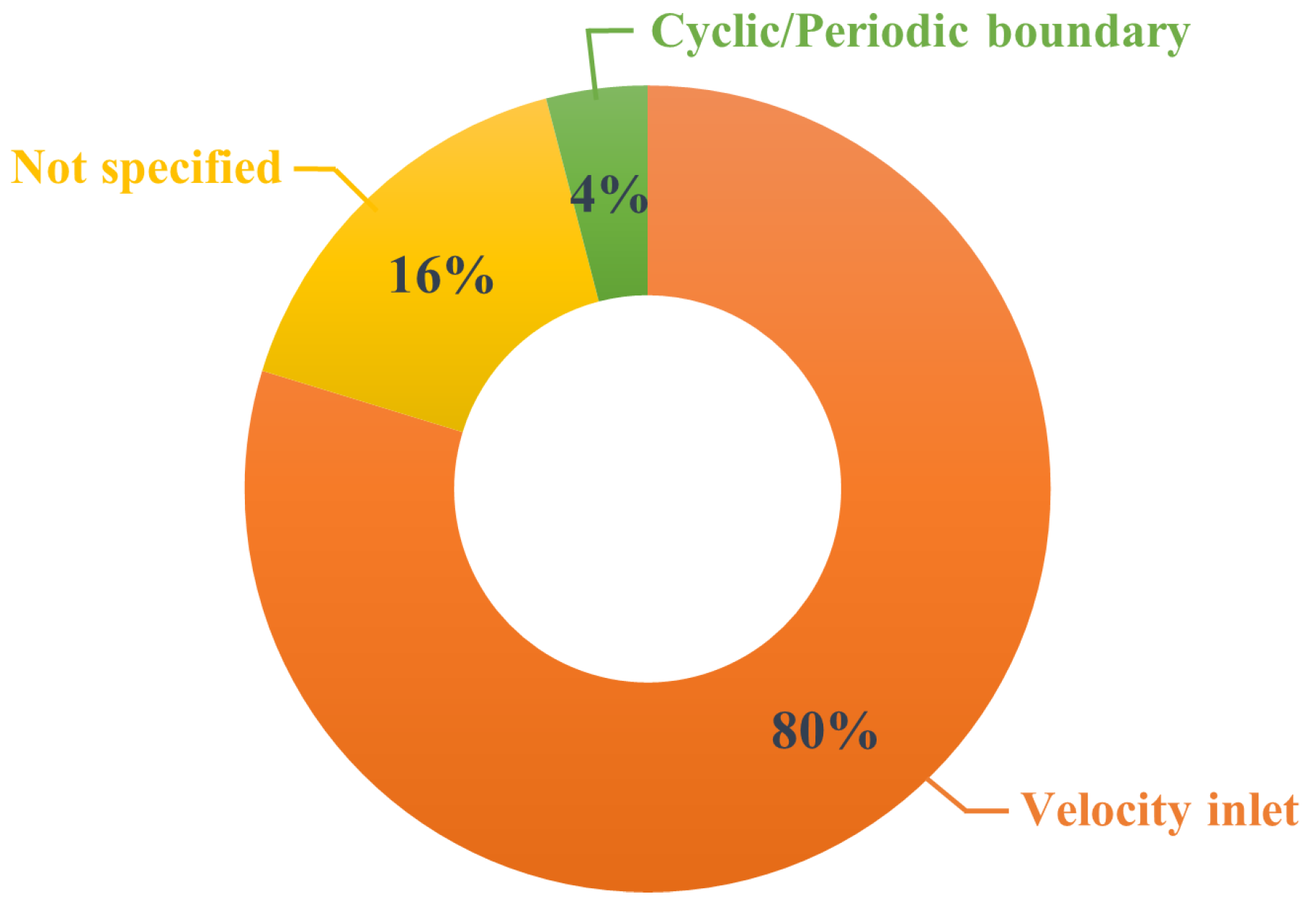

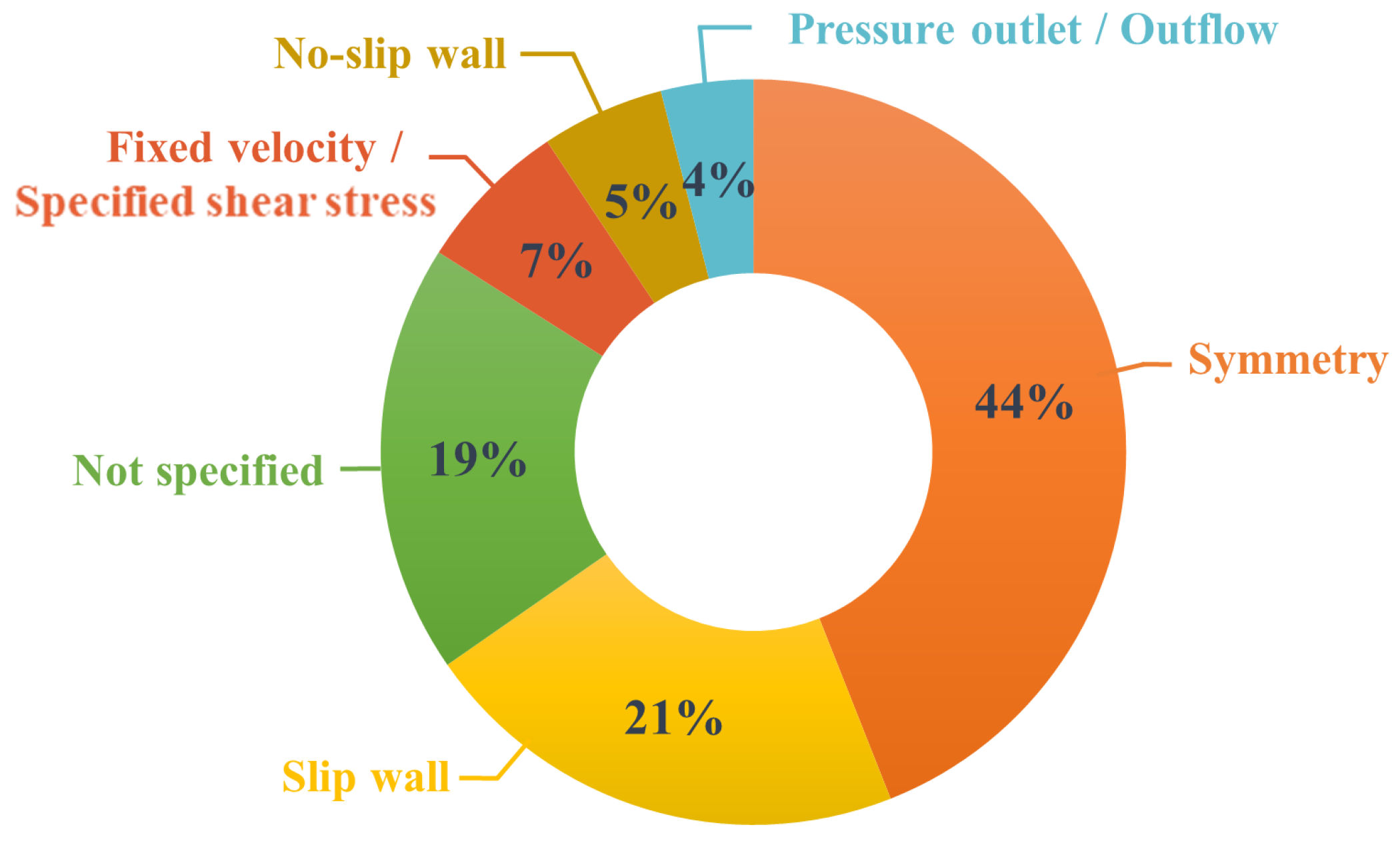
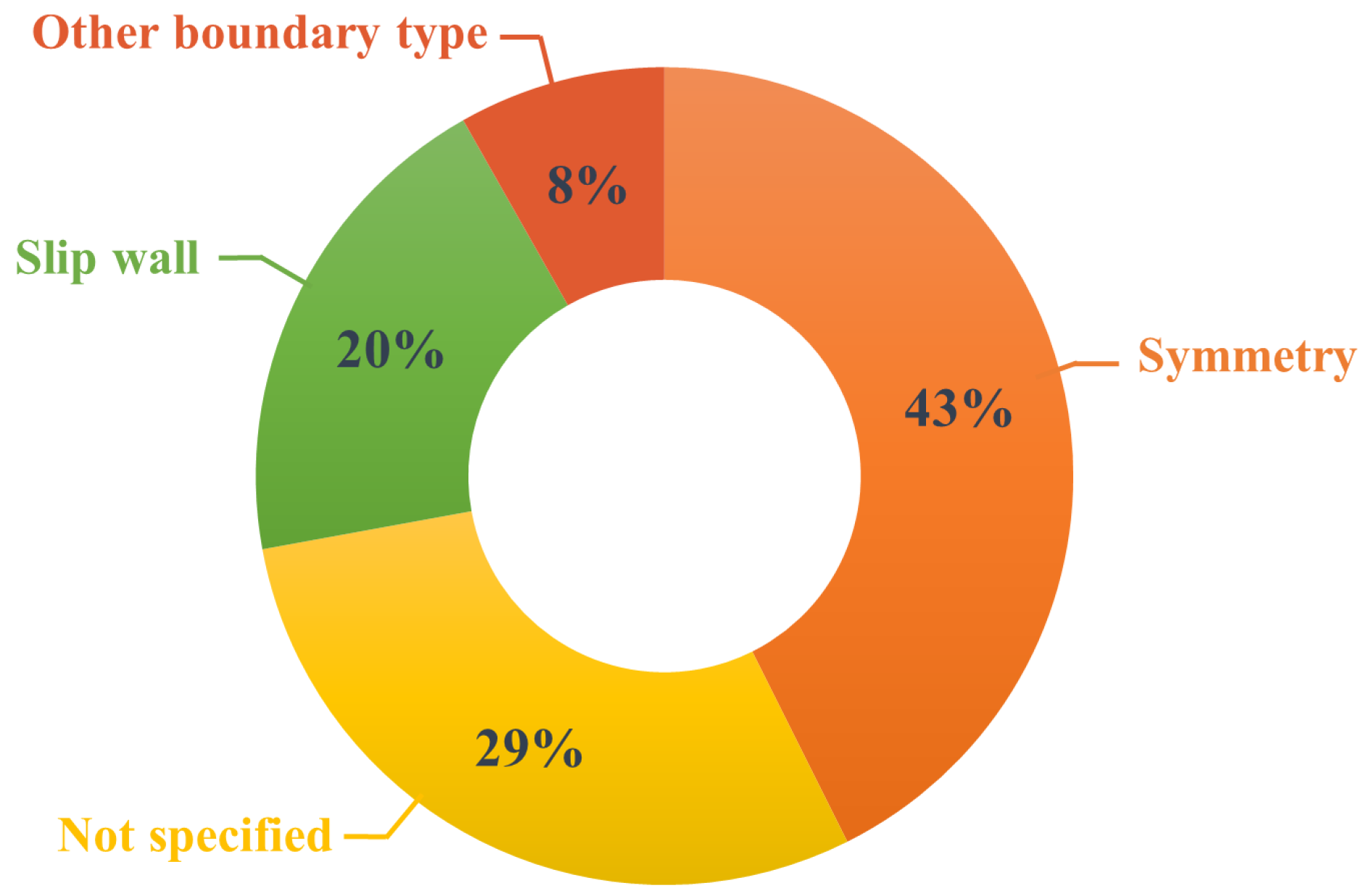
| No | Database | Initial Search | Narrow Search |
|---|---|---|---|
| 1 | Scopus | 715 | 103 |
| 2 | Science Direct | 230 | 147 |
| 3 | Google Scholar | 1090 | 668 |
| Total | 2035 | 918 | |
| No | Type of Search | Number |
|---|---|---|
| 1 | Scopus | 26 |
| 2 | Science Direct | 34 |
| 3 | Google Scholar | 19 |
| 4 | Bibliographic search | 6 |
| 5 | Manual search | 2 |
| 6 | Other relevant work published before 2012 | 2 |
| Total | 89 | |
| Publication Title | Year | Single Building | Multiple Buildings | Wind Tunnel Experiment | Real Terrain with Building Surroundings |
|---|---|---|---|---|---|
| Best practice guidelines for the CFD simulation of flow in the urban environment, quality assurance and improvements in microscale meteorological models (COST 732) [29] | 2007 | Minimum 6H | minimum 6H, where H is the height of the tallest building | Minimum of (the wind tunnel’s test section height; 6H), where H is the height of the tallest building | N/A |
| AIJ guidelines for practical applications of CFD to pedestrian wind environment around buildings [30] | 2008 | Minimum 6H | Minimum 6H, where H is the height of the target building | N/A | The height of the computational domain should be set to correspond to the boundary layer height determined by the terrain category of the surroundings [47] |
| Publication Title | Year | Domain Upstream Distance, [H] | Domain Downstream Distance, [H] |
|---|---|---|---|
| Best practice guidelines for the CFD simulation of flow in the urban environment, quality assurance and improvements in microscale meteorological models (COST 732) [29] | 2007 | Minimum 5H if the approach profiles are well known. If the approach profiles are not available, a larger distance should be used to allow for realistic flow establishment | Minimum 15H to allow for flow re-development behind the wake region |
| AIJ guidelines for practical applications of CFD to pedestrian wind environment around buildings [30] | 2008 | Should be set to correspond to the upwind area covered by a smooth floor in the wind tunnel | Minimum 10H |
| Publication Title | Year | Single Building | Multiple Buildings | Wind Tunnel Experiment | Real Terrain with Building Surroundings |
|---|---|---|---|---|---|
| Best practice guidelines for the CFD simulation of flow in the urban environment, quality assurance and improvement in microscale meteorological models (COST 732) [29] | 2007 | Calculated based on the height of the computational domain and the required blockage (<3%) | Lateral extensions smaller than 5H can be used, where H is the height of the tallest building. At least 2 different distances should be tested | Minimum of (the wind tunnel’s test section width; built area width + 5H on either side of the geometry), where H is the height of the tallest building | N/A |
| AIJ guidelines for practical applications of CFD to pedestrian wind environment around buildings [30] | 2008 | Minimum 5H | N/A | N/A | About 5H from the outer edges of the target building (maintaining a blockage ratio ≤3%) |
| What It Is Called | Errors Considered | Verification with Data | Code Verification | ||||
|---|---|---|---|---|---|---|---|
| Grid convergence | 2 | Spatial | 61 | Yes | 11 | Yes | 0 |
| Grid independence | 13 | Temporal | 4 | No | 50 | No | 74 |
| Grid sensitivity | 17 | Iterative | 1 | ||||
| Grid study | 2 | Statistical | 0 | ||||
| Grid refinement | 2 | Round-off | 0 | ||||
| Mesh independence | 8 | Human | 0 | ||||
| Mesh sensitivity | 2 | ||||||
| Sensitivity analysis | 6 | ||||||
| Other | 9 | Other | 2 | ||||
| Unclear | 4 | ||||||
| None | 9 | ||||||
| What It Is Called | Measure | Accuracy Requirement | Data Relevance | Mix with Calibration | |||||
|---|---|---|---|---|---|---|---|---|---|
| Comparison | 11 | d | 2 | On measure | 26 | Yes | 26 | Yes | 25 |
| Validation | 44 | FB | 21 | None | 48 | No | 48 | No | 49 |
| Verification | 2 | FAC2 | 19 | ||||||
| NMSE | 25 | ||||||||
| 21 | |||||||||
| VG | 4 | ||||||||
| Difference | 11 | ||||||||
| Other | 4 | ||||||||
| Unclear | 11 | ||||||||
| None | 2 | None | 14 | ||||||
Publisher’s Note: MDPI stays neutral with regard to jurisdictional claims in published maps and institutional affiliations. |
© 2022 by the authors. Licensee MDPI, Basel, Switzerland. This article is an open access article distributed under the terms and conditions of the Creative Commons Attribution (CC BY) license (https://creativecommons.org/licenses/by/4.0/).
Share and Cite
Pantusheva, M.; Mitkov, R.; Hristov, P.O.; Petrova-Antonova, D. Air Pollution Dispersion Modelling in Urban Environment Using CFD: A Systematic Review. Atmosphere 2022, 13, 1640. https://doi.org/10.3390/atmos13101640
Pantusheva M, Mitkov R, Hristov PO, Petrova-Antonova D. Air Pollution Dispersion Modelling in Urban Environment Using CFD: A Systematic Review. Atmosphere. 2022; 13(10):1640. https://doi.org/10.3390/atmos13101640
Chicago/Turabian StylePantusheva, Mariya, Radostin Mitkov, Petar O. Hristov, and Dessislava Petrova-Antonova. 2022. "Air Pollution Dispersion Modelling in Urban Environment Using CFD: A Systematic Review" Atmosphere 13, no. 10: 1640. https://doi.org/10.3390/atmos13101640
APA StylePantusheva, M., Mitkov, R., Hristov, P. O., & Petrova-Antonova, D. (2022). Air Pollution Dispersion Modelling in Urban Environment Using CFD: A Systematic Review. Atmosphere, 13(10), 1640. https://doi.org/10.3390/atmos13101640







